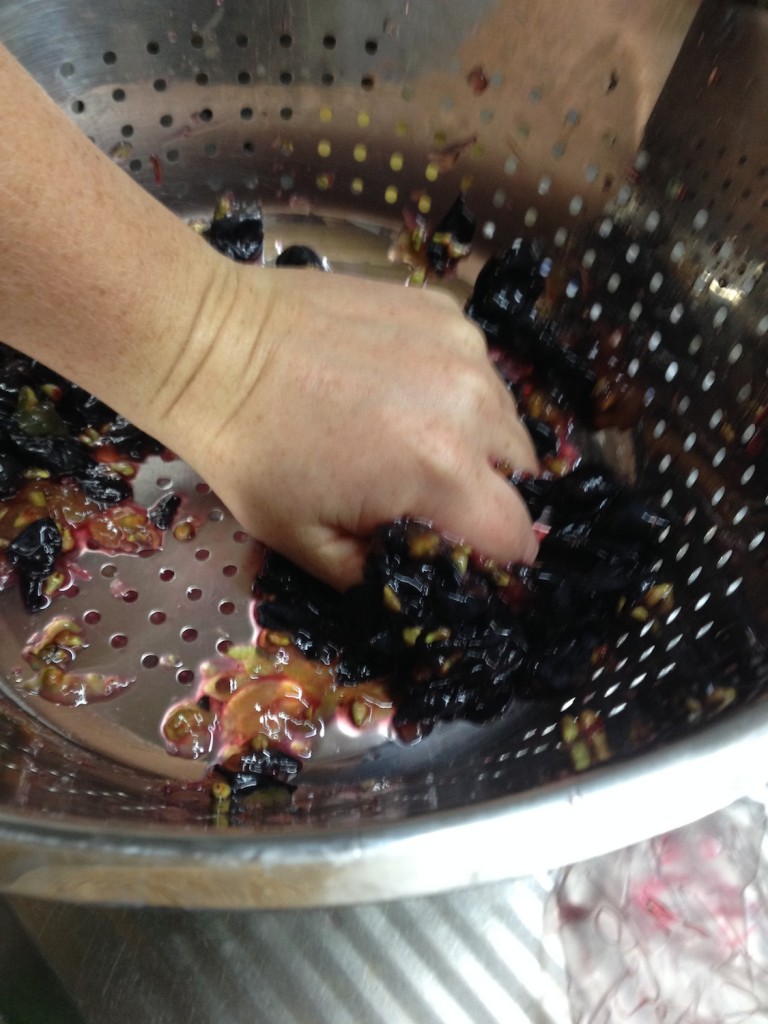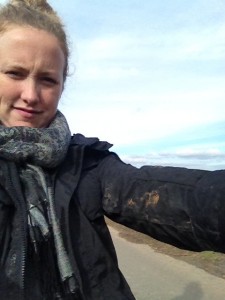As a fiercely passionate student of wine, I, Caitlin Harrison, in a moment of panic and indifference for my direction in life, decided to quit my longstanding career in restaurant work to throw myself fully into what any normal 28 year-old woman would do. I signed up to for Wein lesen, to work the harvest in the Rheinhessen region of Germany with a female winemaker, whose style I adore. Because, well, why not.
I met Eva Vollmer at the Long Night of German Wine at Hearth Restaurant this past July and fell pretty hard for her style. Her wines are modern without disrespecting traditions. Her observance of the process that takes place in the field is something I look for as a wine buyer. And I found her to be no bullshit, which I really appreciated. She, along with the other women at the Long Night, was not there to exploit her wine or her story. So I kept her information, reached out to her in August and received a prompt “YES!” in response to my request to work harvest.
In anticipation for this trip, I did what any normal restaurant manager would do: I worked until the night before I left and barely prepared my belongings. I never really conceptualized my exact role during harvest or even how totally screwed I was with my utter lack of the German language (except for swears and food words, natürlich). I just fearlessly marched into Mainz-Ebersheim, put on some pink rubber boots and got to work.
The most satisfying aspect for me was the quietness that the Handlese, hand picking provided me with. This sudden lack of massive responsibility. The task at hand was Wein lesen, or literally translated, “wine reading”. And while I am not an avid or accomplished reader, I enjoyed more than I ever imagined the task of reading wine.
In each vineyard, we are asked to read the grapes differently. Sometimes we would only cut what is rotten (botrytis or penicillin) or brown stemmed, other times it was about rotten clusters or 3 shoots from the base of the stalk or too densely clustered and so on. If a cluster is cleaned of rot and doesn’t look awesome, we simply tossed it on the ground. My favorite cluster to slay was the Geiztrauben, or second crop, the most densely compacted “late-to-the-party, free-loading” lean, mean and green grapes. Woof!
One morning that changed the way I looked at Handlese altogether was on the sixth day. Robert called Eva to express his concerns regarding about how our pre-harvest work was going and before I knew it, I was told, “every grape that you were throwing on the ground is now coming back to the winery to see if we can use it someway. So, no more grapes on the ground.” I looked at Robert, slightly puzzled. He handed me a black bucket and said, “here is your schwarz eimer, you must TAKE THE GROUND GRAPES WITH YOU.” So, there it was. A two bucket day. But it was a good two bucket day.
I will say that Wein lesen taught me so much more than wine reading; it has taught me to read conversations being held around me in German through tonality, inference and context. My worries about my lack of language slowly dissipated. In fact, all of the worries I had diminished and the focus was always whatever was the task at hand. I often thought about nothing. I just read grapes, sounds, smells, tastes, and I tried my best to listen to everything around me. And I did not plan for what is next. I did not anticipate the day’s work being done. I just lived for each cluster of grapes I was reading, making sure I put it towards an exceptional wine, or I put it on the ground and took it with me.



![120114_riesling_global_RZ [1600x1200]](http://www.stuartpigott.de/wp-content/uploads/2013/10/120114_riesling_global_RZ-1600x12003.jpg)